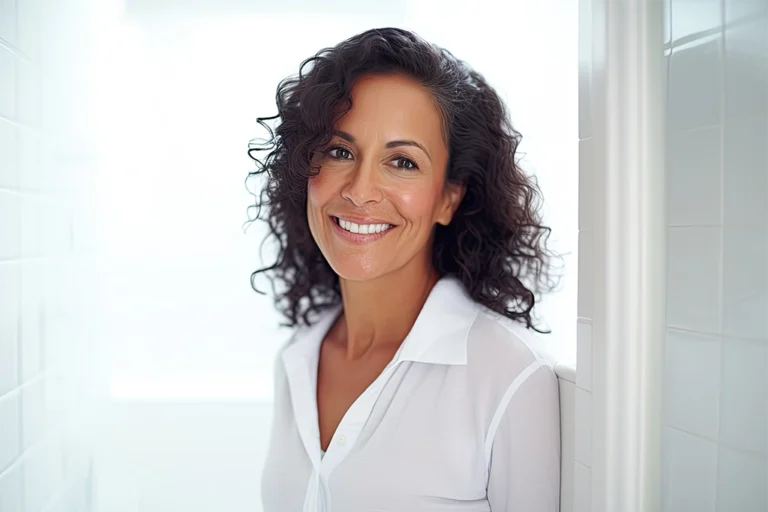In recent years, advancements in medical imaging technology have paved the way for enhanced breast cancer screening techniques, with 3D mammography emerging at the forefront.
Often hailed for its improved accuracy and detailed imaging, 3D mammograms are becoming more popular, especially for people needing more detailed images.
However, with new technology comes the question of cost.
Is a 3D mammogram more expensive than the traditional 2D mammogram that has been the standard for decades?
As patients and healthcare providers alike weigh the benefits against the potential financial implications, it’s essential to understand the cost difference.
In this article, we will compare these two mammography methods’ relative prices and benefits and examine the factors that influence their cost.
Also, we’ll look at insurance coverage, and compare the two imaging techniques to help better you make an educated choice about your breast health.
What Is A Traditional 2D Mammogram?
A traditional 2D mammogram is a type of imaging technique that captures two-dimensional pictures of the breast.
During this study, the breast is placed between two plates, and images are taken from the top and side views.
These images help in identifying any unusual areas or changes in the breast tissue that might need further examination.
For decades, 2D mammograms have been a vital tool in breast health, assisting in the early detection of potential issues.
What Is A 3D Mammogram?
A 3D mammogram, also known as Digital Breast Tomosynthesis, is a newer imaging technique that captures multiple images of the breast from different angles.
This study compiles these images to produce a three-dimensional view, allowing radiologists to examine the breast tissue, layer by layer.
This in-depth look gives a more comprehensive understanding of the breast, making it easier to pinpoint abnormalities or concerns.
Detailed images can be especially beneficial for individuals with dense breast tissue.
How Do The Two Studies Differ?
While 2D and 3D mammograms are similar, they use very different technology, and that’s what makes them different.
With a 2D mammogram, you get static images that provide a flat representation of the breast tissue. Think of it as viewing a closed book from the cover: you can see the outer image but not the individual pages inside.
On the other hand, a 3D mammogram operates like flipping through the pages of a book. Images from a 3D mammogram provide a series of thin slices of the breast tissue, allowing radiologists to view it from multiple angles and depths while reducing the chances of overlooking potential concerns.
Why Might My Healthcare Provider Recommend One Type of Mammogram Over the Other?
Both 2D and 3D mammograms offer their own sets of advantages, and the recommendation for one over the other often depends on individual factors.
For instance, for those with a history of breast cancer in their family or previous ambiguous mammogram results, a 3D mammogram might be more suitable due to its detailed imaging capability.
It’s particularly effective in spotting concerns with dense breast tissue, where a traditional 2D mammogram might not be as revealing.
However, 2D mammograms remain a trusted method and might be recommended for routine screenings, especially when there are no known high-risk factors.
View our available mammography appointments at a location near you today
Insurance and Your Mammogram
Navigating the complicated world of health insurance can be a daunting task, especially when it comes to essential health screenings like mammograms.
Both 3D and 2D mammograms are crucial tools for the early detection of breast cancer.
Understanding your insurance coverage can help you ensure that you get an affordable mammogram.
Armed with the right information, you can approach your healthcare decisions with confidence and ensure you’re getting the necessary care without incurring unexpected costs.
Do Insurance Companies Typically Cover 2D Mammograms?
All insurance companies recognize the importance of 2D mammograms in preventive breast health care.
As such, all health insurance plans cover the cost of annual screening 2D mammograms in full for women starting at age 40.
In some cases, women who have multiple high-risk factors such as BRCA1 or BRCA 2 gene mutations, may be recommended to start annual screening earlier than 40.
Be sure to check with your own health insurance provider to understand the terms of your preventative care coverage and any potential copays or deductibles.
Do Insurance Companies Typically Cover 3D Mammograms?
An increasing number of insurance providers have started to cover 3D mammograms either partially or in full.
New Jersey legislators passed a law mandating health insurance providers in the state must provide coverage for annual screening 3D mammograms.”
Coverage can vary based on how your health insurance provider is set up within the state of NJ.
Always refer to your plan details and contact your insurance provider directly to get clarity on how your coverage applies.
Are There Situations Where Insurance Might Cover One Type But Not The Other?
Nationally, 2D mammograms are more universally covered than 3D mammograms, especially for annual screenings.
Depending on how your health insurance plan is set up, 3D mammograms might be covered as an annual breast screening regardless of a patient’s risk factors. In other cases, 3D mammograms may only be covered if a patient has multiple risk factors, a history of unclear results from previous mammograms, or dense breast tissue.”
Before scheduling your annual screening, it is important to discuss with your insurance provider to understand what options are best for you.
What Are The Out-Of-Pocket Costs For 2D And 3D Mammograms?
Out-of-pocket costs can vary widely based on your insurance plan details.
All 2D mammograms are considered preventative studies and are covered in full on an annual, routine basis. However, if further studies such as a diagnostic mammogram, breast MRI or breast ultrasound are needed after your annual screening, your deductible or copay may apply.
When it comes to 3D mammograms, New Jersey and Pennsylvania-based health insurance providers are required to cover annual screenings in full. If your health insurance provider is employer-owned or based out-of-state, you may be required to pay the difference in cost between a 2D mammogram and a 3D mammogram, which can range between $50 – $100.
It is important to keep in mind any potential costs related to follow-up studies, so be sure to inquire in advance about the total potential costs if follow-up is needed.
Quality Of Imaging
Mammogram technology has made significant advancements in breast imaging, notably the introduction of 3D mammography to enhance or replace traditional 2D methods.
As patients and healthcare providers choose which imaging technique to use, their understanding of the quality and precision differences between 2D and 3D mammograms becomes essential.
This section compares these two imaging methodologies, highlighting their strengths, limitations, and implications for breast cancer detection and diagnosis.
By understanding the differences between the two imaging techniques, you can make more informed choices regarding your breast health.
How Does The Image Clarity Compare Between 2D and 3D Mammograms?
2D mammograms have served as a reliable method for breast screening for many years, providing a two-dimensional image of the breast. These images offer a straightforward view, which can be quite effective for routine screenings.
On the other hand, 3D mammograms capture multiple images from various angles. This comprehensive view offers a more in-depth look into the layers of breast tissue, allowing radiologists to examine the breast tissue in more detail and from different perspectives.
Is There A Difference In Cancer Detection Rates Between The Two?
Studies have indicated that 3D mammograms can detect cancers that might be missed in 2D mammograms.
Due to the layered imaging approach of 3D mammograms, they can often identify smaller masses or tumors, especially in dense breast tissue, that might blend into the surrounding tissue in a 2D image.
As a result, there is a slightly higher cancer detection rate associated with 3D mammograms compared to traditional 2D mammograms.
How Do The Recall Rates For Each Study Compare?
Recall rates play a significant role in the mammogram experience, as being called back for additional imaging can cause anxiety for many individuals.
3D mammograms generally have a lower recall rate compared to 2D mammograms. This is largely due to the detailed images they produce, which give radiologists a clearer view, reducing the instances of ambiguous results that necessitate a second look.
Are There Particular Types of Breast Tissue or Conditions Where One Type of Mammogram Is Better?
Women with dense breast tissue can particularly benefit from 3D mammograms.
Dense breast tissue can sometimes mask or obscure abnormalities in 2D images, making it challenging to distinguish between potential issues and healthy tissue.
The detailed, layered imaging of 3D mammograms can visualize this dense tissue more effectively, providing clearer pictures and reducing uncertainties.
Additionally, those with a history of breast cancer or certain breast conditions might find that 3D mammograms offer a more comprehensive view, allowing for more precise monitoring.
Making the right choice for your health involves considering various factors, and the quality of imaging is undoubtedly a crucial one.
As with all medical decisions, it’s always beneficial to discuss with your healthcare provider, weigh the pros and cons, and select the option that aligns best with your unique needs.

Your Experience and Comfort
The recent decline in breast cancer mortality has been attributed to early detection and treatment, as well as increased patient education. Annual screening mammograms starting at 40 have reduced breast cancer deaths by more than 40% compared to infrequent screening intervals.
Still, undergoing screening or diagnostic mammograms can be an experience filled with apprehension for many patients. It’s even been called mammogram anxiety, partially attributable to anticipation of discomfort, or to waiting for the diagnostic results.
Therefore, healthcare providers and mammography technologists increasingly recognize the importance to help patients feel comfortable and at ease during the procedure.
In this section, we provide a comparative analysis of patient experiences during both 2D and 3D mammograms.
What Do Patients Typically Say About The Comfort Level of 2D Versus 3D Mammograms?
The experience of having a mammogram, whether 2D or 3D, can be similar in many respects.
However, some patients have reported that 3D mammograms feel slightly more comfortable.
This might be due to the fact that 3D mammograms often require less breast compression and can capture images faster, potentially reducing the time under pressure.
Remember, each individual’s comfort threshold varies, and what one person finds comfortable or tolerable, another might not.
How Long Does Each Study Take?
Both 2D and 3D mammograms are relatively quick.
Both types of mammograms take no longer than 15 minutes from start to finish.
It’s always good practice to allocate a bit more time for the appointment to accommodate any pre-study preparation or post-visit discussions.
Is Radiation Exposure Different Between The Two Types Of Mammograms?
Both 2D and 3D mammograms use low doses of radiation to capture images.
Historically, 3D mammograms had a slightly higher radiation dose compared to 2D mammograms.
However, with advancements in technology, the radiation doses for 3D mammograms have been decreasing and are now comparable to or even less than that of traditional 2D mammograms in many modern machines.
It’s essential to check with the specific women’s imaging center about their equipment if radiation exposure is a concern for you.
Are There Any Common Side Effects or Concerns Associated With Each Study?
Afterward, patients might experience some tenderness or discomfort, irrespective of whether they’ve had a 2D or 3D mammogram. This is mainly due to the compression applied during the procedure.
Bruising is rare but can occur in some individuals.
If you’re concerned about pain, consider scheduling your mammogram for a time when your breasts are less tender, such as after your menstrual cycle.
It’s always a good idea to discuss any apprehensions or questions you might have with your imaging provider, ensuring you feel as comfortable as possible with your decision.
How To Schedule A Mammogram Appointment With Us
Our goal is to give you and your healthcare provider the most informative mammogram results possible, and we make it easy for you to get an appointment.
Our mammograms take less than 15 minutes to complete. With numerous locations across South Jersey, conveniently located near major highways and area bridges. We are here to help.
Reach out to us at any of the following locations to schedule an appointment:
- Cherry Hill Office – Cherry Hill, NJ
- Haddonfield Office – Haddonfield, NJ
- Marlton (Greentree) Office – Marlton, NJ
- Moorestown Office – Moorestown, NJ
- Turnersville Office – Turnersville, NJ
- West Deptford Office – West Deptford, NJ
- Willingboro Office – Willingboro, NJ
- Women’s Center at Cross Keys – Sewell, NJ
- Women’s Center at Medford – Medford, NJ
- Women’s Center at Mount Laurel – Mount Laurel, NJ
- Women’s Center at Voorhees – Voorhees Township, NJ
Learn more about the board-certified, subspecialized radiologists who read, analyze and interpret studies at SJRA here.
Frequently Asked Questions
A traditional 2D mammogram is an X-ray of the breast that captures two flat images, one from a side-to-side view and one from a top-to-bottom view.
A 3D mammogram captures multiple images of the breast from different angles, creating a three-dimensional representation, as opposed to the flat images captured in a 2D mammogram.
The cost of 3D mammograms can vary depending on your insurance coverage and location. In some cases, insurance providers cover 3D mammograms partially or fully. It’s important to check with your insurance provider to understand your coverage and potential out-of-pocket costs.
The recommendation for 2D or 3D mammograms depends on individual factors. 3D mammograms are often recommended for those with a history of breast cancer in their family, dense breast tissue, or previous ambiguous mammogram results. 2D mammograms might be recommended for routine screenings when there are no known high-risk factors.
Yes, all health insurance plans cover the cost of annual screening 2D mammograms for women starting at age 40. Be sure to check with your insurance provider for specific coverage details.
An increasing number of insurance providers are starting to cover annual screening 3D mammograms, either partially or fully. Coverage can vary based on your location and insurance provider. Check your plan details and contact your insurance provider for clarity on coverage.
Generally, 2D mammograms are more universally covered for annual screenings. Coverage for 3D mammograms can depend on factors like risk factors, history of unclear results, or dense breast tissue. Discuss with your insurance provider to understand your options.
2D mammograms provide a two-dimensional image of the breast, while 3D mammograms offer a more comprehensive view by capturing multiple images from different angles. This layered approach allows for more detailed and in-depth examination.
Studies suggest that 3D mammograms can detect cancers that might be missed by 2D mammograms, especially in dense breast tissue. 3D mammograms have a slightly higher cancer detection rate due to their ability to identify smaller masses or tumors.
3D mammograms generally have a lower recall rate compared to 2D mammograms. The detailed images provided by 3D mammograms reduce the chances of ambiguous results, which often require additional imaging.
Some patients find 3D mammograms slightly more comfortable as they often require less breast compression and capture images faster. Comfort levels can vary among individuals.
Both 2D and 3D mammograms typically take no longer than 15 minutes to complete.
Both 2D and 3D mammograms use low doses of radiation. Modern 3D mammogram machines have reduced radiation doses and are comparable to or even less than that of traditional 2D mammograms.
Patients might experience tenderness or discomfort after both 2D and 3D mammograms due to compression during the procedure. Bruising is rare but possible. Discuss any concerns with your imaging provider.
You can easily schedule a mammogram appointment at any of our convenient locations. Contact us at any of the following offices to book your appointment:
• Cherry Hill Office – Cherry Hill, NJ
• Haddonfield Office – Haddonfield, NJ
• Greentree Office – Marlton, NJ
• Turnersville Office – Turnersville, NJ
• West Deptford Office – West Deptford, NJ
• Women’s Center at Cross Keys – Sewell, NJ
• Women’s Center at Virtua – Voorhees Township, NJ
• Women’s Center at Voorhees – Voorhees Township, NJ



